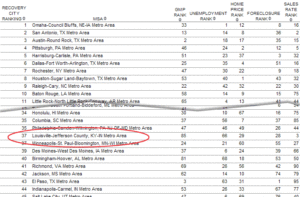The last few years have brought significant changes in the housing sector. Right now, the economy is on the rise and the real estate market is becoming more dynamic, helping buyers and sellers to enjoy a range of available housing options. What’s in store for professionals in the real estate sector?

Read on our scoop on the latest report published by the Urban Land Institute, Emerging Trends in Real Estate, to find out what are the strongest real estate trends that will still affect the market during this year.
1. Millennial Revolution
There’s no doubt about it – the generation of Millennials will increasingly impact the real estate market in the near future. This is a generation known for its willingness to relocate if that helps in achieving its goals. It’s safe to say that because of their dynamic character, Millennials aren’t interested in buying homes – the generation of their parents is reported to have bought many more homes when at their age.
Nevertheless, the rise of Millennials in the real estate business had serious consequences for a number of Midwest cities, which have become attractive to younger generations. Developers will surely follow the generation to see where it’s headed. Have a look at this insightful reportage that shows stories of four Louisville Millennial households and explores their decisions regarding Louisville real estate.
2. Second-Tier Cities Will Boom
What once was considered a second-tier city has now become a new hot zone for developers. Cities like Dallas, Portland, Austin, Houston, San Francisco, and Orange County are all considered as offering interesting opportunities for developers and buyers alike. Texas is really booming right now – three Texan cities have made it to the Top 10 of the Fastest Growing Cities list this year.
3. Market Recovers, Cities Grow
The real estate market is closely connected to what is happening in the household economy in general – slower job, wage, and overall income growth all have a bearing on the housing scene. Low unemployment will ensure an area’s future growth – cities, where economic problems are still on the loose, aren’t expected to welcome many developers and buyers anytime soon.
4. The Return of Smile Philosophy
The so-called ‘smile investment philosophy’ is making a comeback in real estate development. What does it mean? Basically, developers and investors will have their eyes on a particular area – starting with cities in the Northeast, going down the Sun Belt with the states of Texas, Florida, and Arizona, and finally coming up in the Northwest, passing Northern California, Oregon, and Washington. Naturally, the return of this philosophy will exclude cities located in the Midwest.
5. The (Selective) Rise of Suburbia
In general, there’s a lot of interest in developing suburban areas, but on one condition – developers will focus on somewhat more urban-related projects and choose locations where public transport and other facilities are easily available.
6. Banking in the Shadows
It’s hard to say whether lending standards will loosen up or not, but the emergence of a new trend called ‘shadow banking’ might just as well fill this void. Shadow banking works like lending and the only exception is that it avoids the banking system and its many regulations. Private funds, family offices, and wealthy individuals will all play their part in the rise of this new service.
7. Multi-Family Apartments Won’t Hold
The recession times called for the building of many apartment blocks, but right now they’re basically waning. Some say that in 2013, there were actually more multi-family buildings than the demand required. The trend will most likely unwind in 2014.
8. Fewer Condos Than Ever
Condo building still has a hard time recovering from the recession and consequently not too many people will risk developing condo buildings. Some developers try to combine the perks of single-family apartments with the future possibility of turning them into condos – depending on the outlook of the market. The same trend will affect high-end apartment buildings, for which the demand is simply lacking.
Millennials add to this trend as well, but not only – senior adults are actually a big part of buyers and are on the lookout for comfortable, single-family houses with easy access to local amenities. They create a demand that further stifles the development of condo buildings.
9. Location Becomes More Important
Urban areas are the hottest areas of the future real estate market. Easy access to public transportation, facilities, and local businesses will only add to the property value. The location will be an increasingly important factor in real estate value and buyers should acknowledge this when they invest with the future in mind.
10. Less Personal, More Communal
When it comes to interior design, we see communal spaces grow and personal spaces shrink. Living rooms, kitchens or even backyards will all become bigger – mostly for the purposes of entertaining – and instead of huge master bedrooms, buyers will opt for smaller and more functional personal spaces.
Real Estate Trends in Louisville
Editor: Generally speaking, Louisville trends in real estate follow the national ones but to a lesser degree and with a 6-9 month delay. Kentucky’s population increase has trailed the National average by 1.1%. This piece was written by Isabel Wiliams, a statistician with BizDb.


